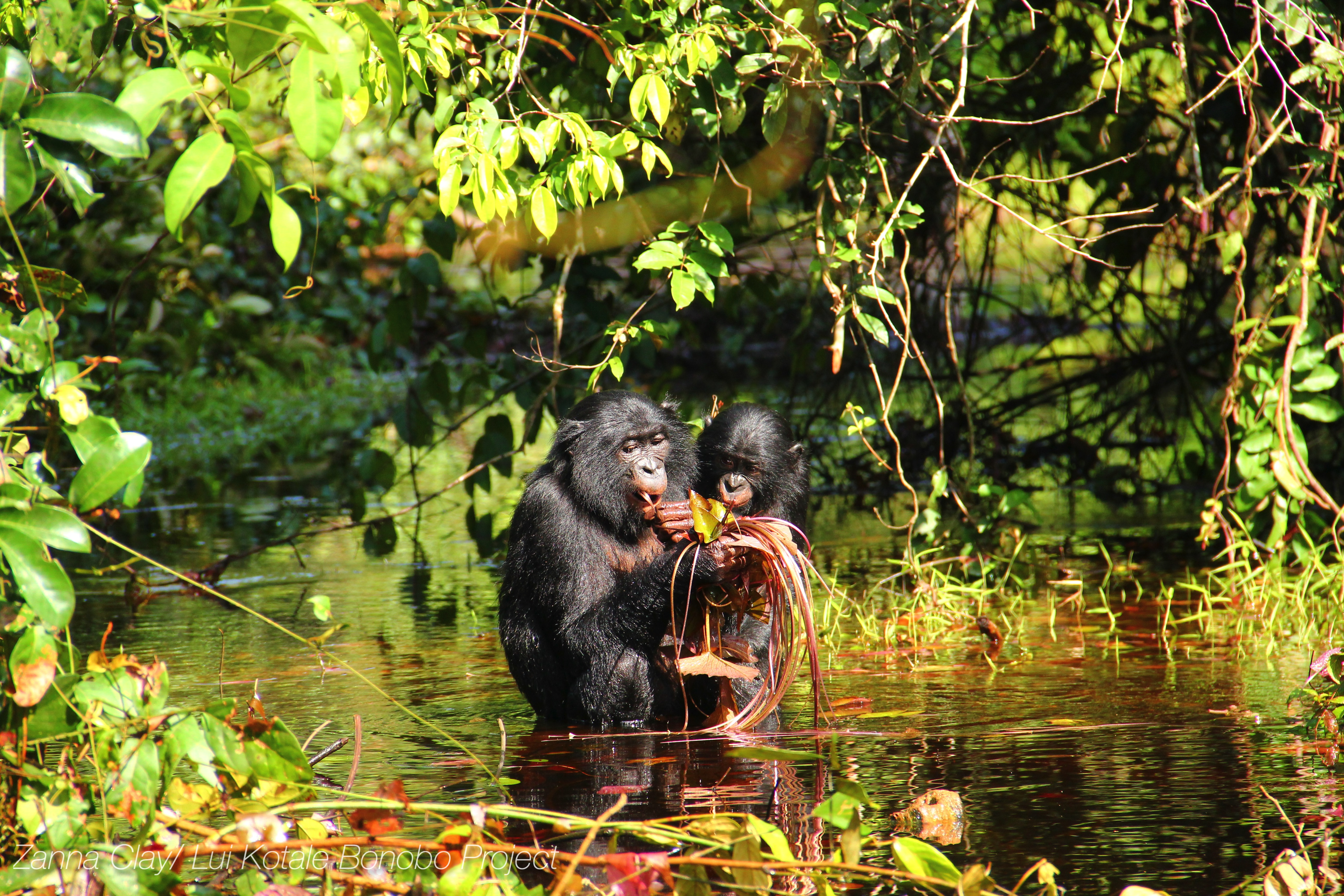Bonobo communication is a fascinating area of study that reveals how closely these remarkable primates relate to humans. Researchers have uncovered that bonobos utilize a complex system of vocalization, akin to a rudimentary language, to convey their needs and social dynamics. This intricate animal communication is characterized by the use of vocal compounds and nuanced phrases, allowing them to articulate a variety of social situations vividly. Understanding bonobos and their vocal behavior not only enhances our knowledge of their social interactions but also provides insights into the evolution of language. The exploration of bonobo social behavior sheds light on the cognitive abilities shared between our species and these intelligent apes.
The study of bonobo vocal interactions offers intriguing insights into the ways these intelligent creatures express themselves and manage social relationships. Often referred to as our closest living relatives alongside chimpanzees, bonobos demonstrate a unique form of inter-animal dialogue that highlights their social intricacies. This alternative form of animal talk suggests that complex communication systems were present long before the advent of human language. Through the lens of their vocal practices, researchers are beginning to decode the essential elements of language evolution, revealing how social complexity and vocalization are intertwined. Like humans, bonobos appear to rely on a rich tapestry of sound to navigate their social world, indicating a profound connection between human communication and the vocal behaviors of our primate cousins.
Understanding Bonobo Vocalization
Bonobo vocalization is a fascinating aspect of their behavior that reflects their social dynamics and communication skills. Recent research indicates that these remarkable primates have developed a complex vocal repertoire that resembles human language in structure. The ability to use vocalizations in a context-dependent manner showcases their understanding of social situations, as evidenced by behaviors like whistling to coordinate movements over long distances. This is similar to how humans utilize language to convey information and maintain social bonds.
Moreover, bonobo vocalizations include a diverse array of sounds, such as peeps, yelps, and whistles, each serving specific functions within their social interactions. For instance, researchers have found that these calls can indicate tense situations or even direct others in their group about potential threats, emphasizing the intricate nature of bonobo communication. By studying these vocal patterns, scientists are unraveling the complexity behind animal communication, illuminating how social structures may influence vocalization habits.
The Role of Compositionality in Bonobo Communication
Compositionality is a critical factor in understanding bonobo communication, highlighting their capacity to create new meanings by combining vocalizations. Just as human language allows for the formation of new words and phrases, bonobos utilize a similar approach by layering their sounds to convey complex social messages. This reveals that the roots of language may extend beyond homo sapiens, suggesting that our closest relatives have a more sophisticated communication system than previously thought.
The study conducted in the Kokolopori reserve emphasized how certain combinations of sounds could signal different contexts, mirroring the human ability to communicate intricate ideas. Researchers compiled a ‘dictionary’ of bonobo calls, illustrating how vocal sequences can indicate actions, emotions, and social states. This groundbreaking understanding of bonobo communication enhances our comprehension of language evolution and strengthens the argument that such abilities may predate the emergence of humans.
Bonobo Social Behavior and Communication
Bonobo social behavior is deeply intertwined with their communication methods, reflecting a complex system developed over millions of years. These primates often exhibit sophisticated social bonding that allows them to form temporary factions before reuniting, a behavior that is likely facilitated by their advanced vocal skills. By effectively communicating intentions and emotions, bonobos navigate their social environment, ensuring group cohesion and collaboration.
The meticulous observation of bonobo vocalizations has shed light on how these animals maintain their social structures. Researchers documented vocal interactions during various contexts, revealing how sounds like peeps and whistles signal different social events. This intricate network of vocal communication not only helps bonobos manage their social dynamics but also aligns with theories on the evolution of complex language systems in primates.
Insights into Animal Communication
The recent findings about bonobo communication provide significant insights into animal communication as a whole. By utilizing methods typically reserved for human linguistics, researchers have begun to create a clearer picture of how different species convey messages. The development of a bonobo ‘dictionary’ marks a significant leap in the understanding of animal vocalization, suggesting that many animals exhibit levels of complexity previously unrecognized.
This research indicates that the ability to create nuanced vocal combinations may be a common trait among animals with complex social structures. The parallels drawn between bonobo and human communication highlight a broader evolutionary narrative, enhancing our understanding of how language may have evolved as a means of fostering social bonds across various species.
Evolutionary Significance of Bonobo Vocalization
Bonobo vocalization provides critical insights into the evolutionary significance of communication among primates. By examining how vocal complexity correlates with social structure, researchers have made strides toward understanding the development of language. This relationship suggests that the communicative abilities seen in modern humans and bonobos may share a common ancestral trait, reflecting an evolutionary strategy that supports social cohesion.
Moreover, by exploring the similarities in vocal systems between bonobos and humans, researchers can better understand how social interactions shaped language’s evolution. The evidence gathered from studies in the Kokolopori reserve indicates that bonobos utilize sophisticated communication methods that may offer clues about the early stages of language development among hominins.
Comparative Analysis: Bonobos and Chimpanzees
In comparing the communication systems of bonobos and chimpanzees, significant similarities and differences emerge. Both species exhibit complex social behaviors and a range of vocalizations, yet bonobos appear to employ their vocal skills in more nuanced ways. This might suggest that the structure of bonobo social relationships necessitates a more intricate communication approach than that of their chimpanzee counterparts.
Recent studies highlight the use of combinatorial vocalizations among both species, yet the emphasis on context and social dynamics in bonobo communication unveils a unique aspect of their social behavior. Understanding these distinctions provides a clearer framework for future research on the evolution of language and communication among primates.
The Impact of Environmental Factors on Vocalization
Environmental factors play a crucial role in shaping bonobo vocalization and communication. Living in dense forests, bonobos must adapt their vocal behaviors to navigate intricate acoustic environments effectively. This adaptation may influence how they utilize different vocalizations to maintain contact and synchronize movements with their social groups.
Additionally, the variability of sounds produced by bonobos can be seen as a response to their surroundings. This interplay between environment and communication reflects broader themes in animal behavior research, where understanding the impact of habitat on vocalization can yield important insights into the adaptability and social complexity of species.
Future Directions in Bonobo Communication Research
As research into bonobo communication progresses, future studies are likely to delve deeper into the nuances of their vocalization patterns. Ongoing observation and analysis will be essential in refining the ‘dictionary’ of bonobo calls and understanding the context in which they are used. This could lead to an even greater appreciation of how bonobos use language-like properties in their vocalizations.
Moreover, the implications of this research extend beyond bonobos alone; comparative studies with other primates could reveal significant insights into the evolutionary trajectory of language. By establishing a comprehensive understanding of bonobo communication, researchers may uncover pivotal connections that could reshape our understanding of animal communication across various species.
Enhancing Conservation Efforts through Communication Studies
The findings regarding bonobo vocalization highlight not only the complexity of their communication but also its significance in conservation efforts. Understanding how these animals interact through sound can inform strategies for habitat protection and management. By recognizing the importance of vocal communication in social bonding and group cohesion, conservationists can better appreciate the impacts of environmental changes on bonobo populations.
Moreover, integrating communication studies into conservation initiatives can enhance the effectiveness of community engagement and education programs. Highlighting the sophisticated nature of bonobo vocal behavior can foster greater empathy and understanding within local communities, encouraging collaborative efforts to protect these critically endangered primates.
Frequently Asked Questions
What is bonobo communication and how does it compare to human communication?
Bonobo communication refers to the diverse vocalizations and social cues used by bonobos to interact with one another. Research suggests that bonobos employ complex vocalizations similar to human language, utilizing word compounds and phrases to express intricate social situations. This compositionality in bonobo vocalization resembles the structure of human language and highlights the evolutionary adaptations shared between humans and bonobos.
How do bonobos utilize vocalization in their social behavior?
Bonobos use vocalization as a critical tool for coordinating group activities and managing social interactions. Their vocal repertoire includes peeps, yelps, and whistles, which convey specific meanings and enable them to express emotions, commands, or indicate the presence of external threats. This sophisticated level of bonobo communication underscores the link between vocal complexity and social organization, allowing them to maintain strong social bonds even across distances.
What role does compositionality play in bonobo vocalization?
Compositionality in bonobo vocalization is the ability to combine different vocal sounds into sequences that create complex meanings. Research conducted on wild bonobos reveals that they employ this feature to communicate nuanced social information, similar to how humans form phrases. This discovery establishes the groundwork for understanding bonobos’ sophisticated animal communication and its evolutionary implications.
Can we understand bonobo communication through a ‘dictionary’ of vocalizations?
Yes, researchers have created a ‘dictionary’ of bonobo vocalizations that categorizes different sounds based on their meanings and contexts. This dictionary highlights the compositionality observed in their communication, allowing scientists to decode their vocal behavior effectively. Understanding bonobo communication through this lens emphasizes the complexity of their social behavior and its parallels to human language.
What insights does understanding bonobo communication provide into language evolution?
Understanding bonobo communication offers valuable insights into language evolution by highlighting the shared traits between bonobos and humans. Since bonobos utilize complex vocalizations and compositionality, it suggests that the roots of language may predate humans. This research helps scientists explore the evolutionary pathways of language, revealing how complex communication systems develop in species with sophisticated social structures.
How do bonobo social interactions influence their vocal communication?
Bonobo social interactions significantly influence their vocal communication patterns. These animals establish intricate social bonds and often alter their vocalizations based on the context, such as signaling warnings or coordinating movements within a group. Their vocal complexity reflects their social dynamics, indicating that communication plays a vital role in maintaining cohesion in their varying social structures.
What similarities exist between bonobo and chimpanzee communication?
Both bonobos and chimpanzees exhibit complex communication systems characterized by vocalizations that show compositionality. Researchers have noted that these two primate species, sharing a common ancestor, utilize their vocalizations to form combinations that convey intricate meanings, similar to the constructs found in human language. This highlights a shared evolutionary trait in how they communicate socially.
Why is the study of bonobo vocalizations important for understanding animal communication?
The study of bonobo vocalizations is crucial for grasping the complexities of animal communication, as it provides the first systematic approach to decoding their entire vocal repertoire. By documenting the meanings of various calls and their combinations, researchers can better understand the social behaviors of bonobos and the evolutionary foundations of communication in animals, which may also inform our understanding of human language development.
| Key Points |
|---|
| Mia, a young female bonobo, vocalizes to communicate with distant group members. |
| Bonobos use vocalizations similar to humans, with a dictionary of calls suggesting complex social communication. |
| The concept of ‘compositionality’ in bonobo communication allows for the creation of new meanings from combinations of sounds. |
| Research indicates that vocal complexity in bonobos correlates with social complexity in their groups. |
| Bonobo calls can indicate various commands, emotions, and responses to external situations, forming a basis for structured communication. |
| The study expands understanding of animal communication by systematically categorizing the meanings of bonobo calls. |
Summary
Bonobo communication is a fascinating area of research, revealing the sophisticated ways in which these primates convey messages much like humans do. The study highlights how bonobos utilize a complex system of vocalizations that exhibit compositionality, allowing them to express nuanced social concepts. This understanding is not just significant for studying bonobos but also provides insights into the evolution of language and communication in primates, including our closest relatives.





